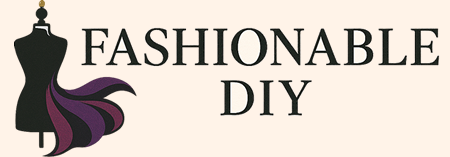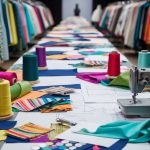Eco-Friendly Fashion on a Budget: Top DIY Clothing Hacks
Choosing Sustainable Materials
Opting for materials like organic cotton and bamboo can significantly reduce the environmental impact of fashion choices. These materials offer eco-friendly alternatives while maintaining comfort and style.
Organic Cotton Advantages
Organic cotton is grown without synthetic fertilizers or pesticides, making it a more environmentally responsible choice than conventional cotton. Its cultivation supports biodiversity and enhances soil quality, which benefits local ecosystems.
Farmers cultivating organic cotton use natural techniques, such as crop rotation and composting, to promote plant health. This results in reduced environmental pollution and energy consumption. Consumers often find organic cotton to be soft and breathable, enhancing the wearer’s comfort.
Choosing garments made from organic cotton also supports sustainable agriculture and fair trade practices. By prioritizing organic cotton, people can contribute to the preservation of natural resources while still enjoying fashionable and affordable clothing.
Bamboo Fabric Benefits
Bamboo fabric has gained popularity in sustainable fashion due to its rapid growth and minimal resource requirements. Unlike other crops, bamboo thrives without the need for pesticides or irrigation. This makes it an ecologically friendly option.
The fabric derived from bamboo is remarkably soft, often compared to the luxurious feel of silk or cashmere. It is known for its breathability and moisture-wicking properties, providing comfort in various climates.
Bamboo fabric is biodegradable, reducing waste in landfills. By choosing bamboo-based clothing, individuals can support sustainable production and contribute to environmental conservation. Sustainable fashion enthusiasts find bamboo fabric a compelling choice for its functional and ecological benefits.
Supporting Sustainable Brands
Embracing sustainable brands plays a crucial role in promoting eco-friendly fashion. By identifying truly ethical companies and recognizing those leading the way, consumers can make informed choices that benefit both the environment and their wardrobes.
Identifying Genuine Sustainability
A critical step in supporting sustainable brands is assessing their claims for authenticity. Genuine sustainability involves transparency in sourcing materials, fair labor practices, and a commitment to reducing environmental impact. Shoppers should investigate whether brands use organic or recycled materials, and if they comply with recognized certifications such as Fair Trade or Global Organic Textile Standard.
Checking company websites for detailed sustainability reports can offer insights into their practices. It’s also useful to look for third-party evaluations or consumer reviews that verify these claims. Brands that provide comprehensive transparency about their processes are often more committed to eco-friendly approaches.
Brands Leading the Way in Eco-Fashion
Brands making strides in eco-friendly fashion frequently set industry standards by blending style with sustainability. Companies like Patagonia and Reformation stand out by continuously innovating their supply chains to minimize waste and energy usage. Their initiatives, such as garment recycling programs and the use of eco-conscious fabrics, demonstrate a leadership role in fashion.
Other brands, such as Everlane and Eileen Fisher, focus on radical transparency and ethical labor conditions, emphasizing social responsibility alongside environmental concerns. These companies highlight the fashion industry’s potential for responsible production while providing fashionable options that align with sustainable values. Supporting such leaders encourages wider adoption of sustainable practices throughout the fashion sector.



